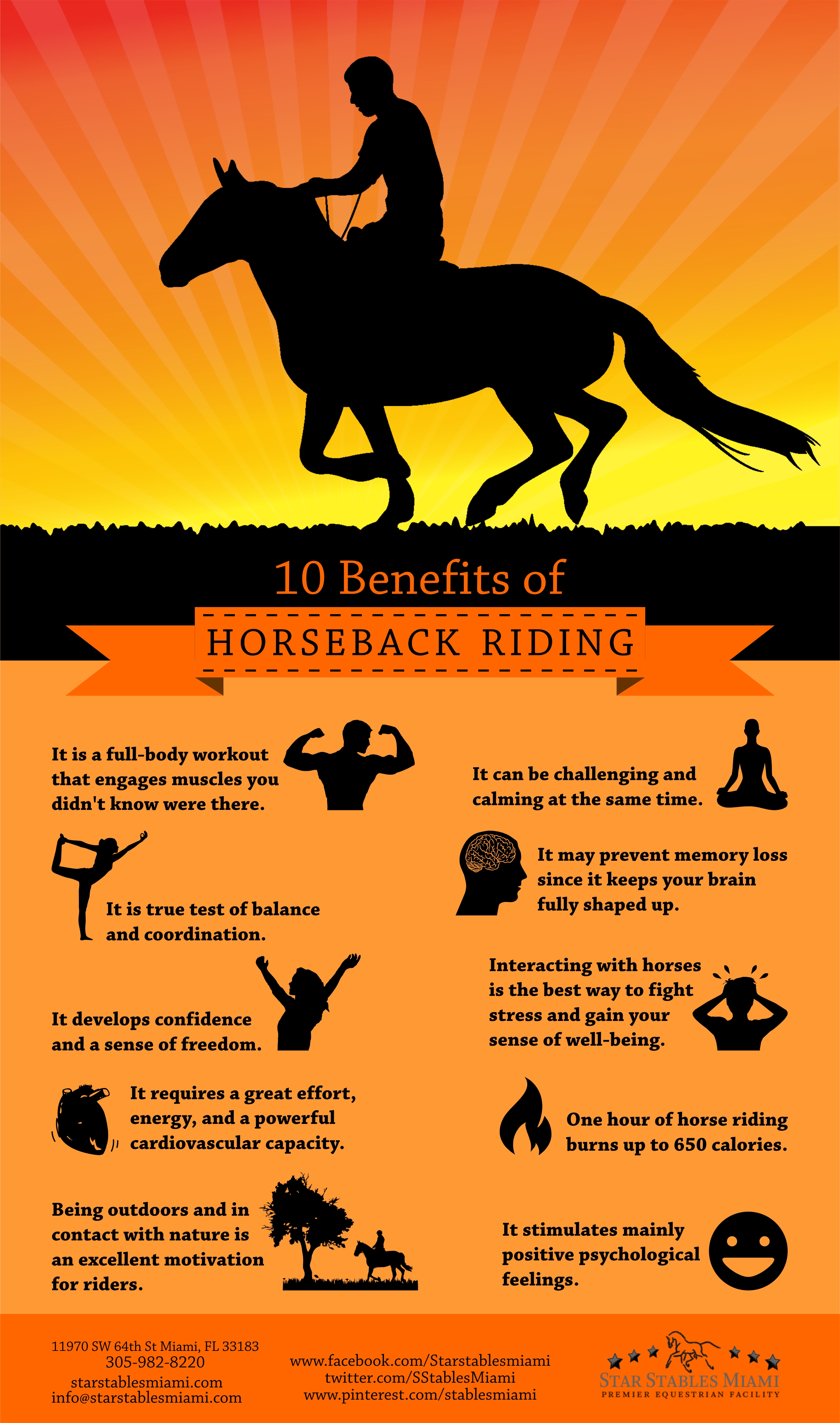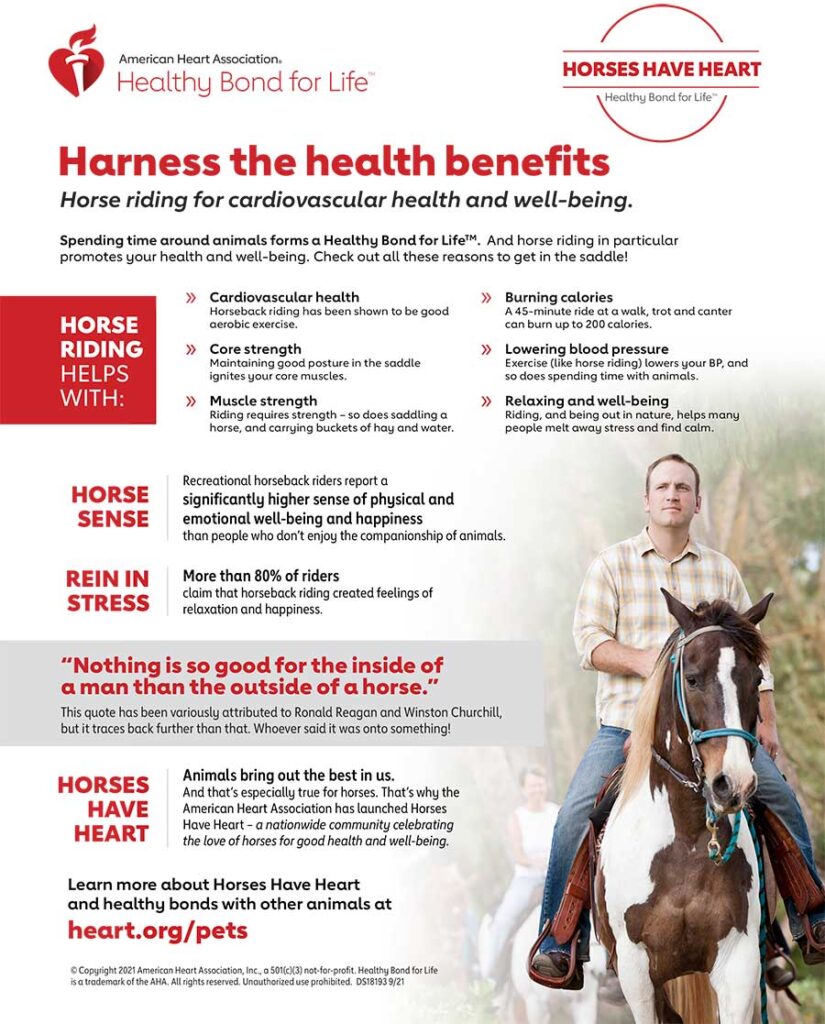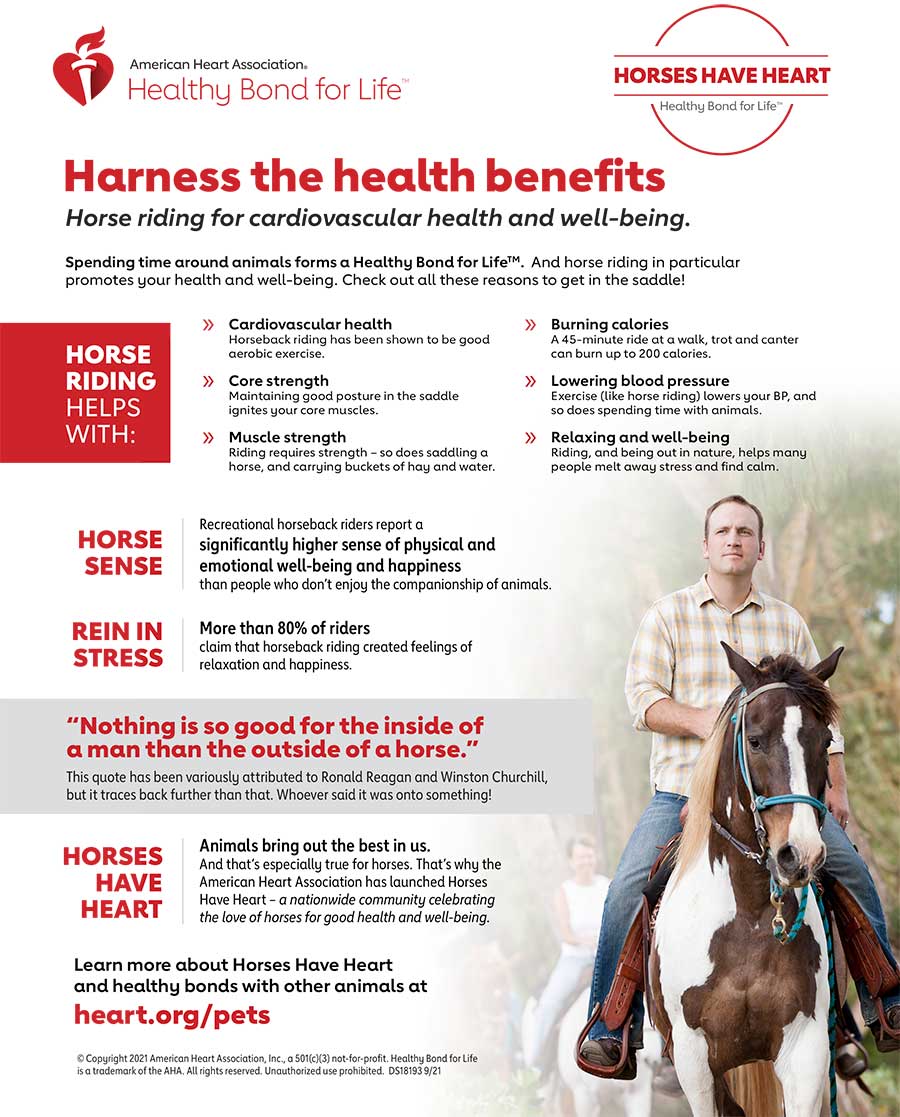Are you interested in learning about the health benefits of horseback riding? Well, you’ve come to the right place! In this article, we will dive into the numerous advantages that this activity can bring to your overall well-being. From physical fitness to mental relaxation, horseback riding is a fantastic way to not only enjoy the great outdoors but also improve your health. If you’re eager to learn more about this exciting topic, keep reading!
Horseback riding is not only a fun and exhilarating hobby, but it also offers a wide range of health benefits. Firstly, it is a fantastic form of exercise that engages various muscle groups in your body. From your core to your legs and back, horseback riding helps to strengthen and tone these muscles through the constant movement and balance required when riding. Additionally, horseback riding can also improve your coordination and balance, as you must learn to synchronize your movements with your horse. This can have a positive impact on your overall posture and stability. Furthermore, being in nature and spending time with horses can also promote mental well-being, reducing stress and anxiety. So, if you’re looking for a new activity that not only keeps you fit but also helps you find inner peace, horseback riding might just be the perfect choice for you. Stay tuned for more detailed information on this topic in our upcoming article!
The Health Benefits of Horseback Riding
Horseback riding is not only an enjoyable activity but also offers numerous health benefits. Whether you are an experienced rider or a beginner, engaging in horseback riding can have positive effects on your physical, mental, and emotional well-being. In this article, we will explore the various health benefits that horseback riding can provide.

Physical Benefits
Improves Balance and Coordination
Horseback riding requires a great deal of balance and coordination. As you ride, you constantly need to adjust your body position and distribute your weight accordingly to maintain stability on the horse. This helps to improve your balance and coordination skills over time.
Increases Muscle Strength
Riding a horse engages a wide range of muscle groups, including your core, legs, and arms. As you guide the horse and maintain your position, these muscles are continuously working and strengthening. Regular horseback riding sessions can lead to improved muscle tone and increased overall strength.
Enhances Cardiovascular Fitness
Horseback riding is a physical activity that can get your heart rate up and provide a cardiovascular workout. The rhythmic motion of riding, along with the physical exertion required to control the horse, can improve your cardiovascular fitness and stamina.
Boosts Flexibility and Mobility
The movements involved in horseback riding, such as bending, twisting, and stretching, can help to improve your flexibility and mobility. Regular riding sessions can gradually increase your range of motion and make you more agile.
Mental Benefits
Improves Concentration and Focus
When you ride a horse, you need to stay focused and concentrate on controlling the horse’s movements. This constant need for concentration helps to improve your ability to stay attentive and focused on the task at hand.
Enhances Cognitive Function
Engaging in horseback riding requires you to make quick decisions and solve problems on the spot. This helps to improve your cognitive function, including your problem-solving skills, decision-making abilities, and mental alertness.
Relieves Stress and Anxiety
Riding a horse can be a great way to unwind and relieve stress. The rhythmic motion of riding, coupled with the peaceful environment of nature, can provide a calming effect and help to reduce feelings of anxiety and stress.

Emotional Benefits
Boosts Confidence and Self-Esteem
Horseback riding can be a confidence-building activity. As you become more skilled and comfortable with riding, you gain a sense of accomplishment and self-assurance. The bond and trust developed between you and the horse can boost your confidence and self-esteem.
Promotes Relaxation and Mindfulness
Spending time with horses in a peaceful and natural setting can promote relaxation and mindfulness. As you ride, you become immersed in the present moment, focusing on the horse’s movements and the surrounding environment. This can help to reduce stress and promote a sense of calm.
Develops a Bond with the Horse
When you ride a horse regularly, you develop a special bond and connection with the animal. This bond can provide a great sense of joy and emotional fulfillment. Building a relationship with the horse can also help to improve your communication and social skills.
Choosing the Right Horse for Riding
Before embarking on your horseback riding journey, it is essential to choose the right horse that suits your needs and skill level. Here are some factors to consider when selecting a horse:
Understanding Different Breeds
Different horse breeds have different temperaments and characteristics. It is important to research and understand the traits of various breeds to find one that matches your riding style and requirements.
Considering Size and Temperament
The size and temperament of the horse are crucial factors to consider. Ensure that the horse’s size is suitable for your weight and height. Additionally, evaluate the horse’s temperament to ensure it aligns with your level of experience and comfort.
Evaluating the Horse’s Training and Experience
If you are a beginner, it is advisable to choose a horse that is well-trained and experienced. A horse with a calm and patient disposition can make the learning process more enjoyable and safe. Evaluate the horse’s training history and past experiences before making a decision.

Preparing for a Horseback Riding Session
To ensure a safe and enjoyable horseback riding experience, it is important to adequately prepare yourself before each session. Here are some essential steps to follow:
Safety Precautions and Equipment
Always prioritize safety by wearing the appropriate safety gear, including a helmet, boots with heels, and a properly fitted riding vest. Familiarize yourself with the safety rules and guidelines of horseback riding.
Warming Up and Stretching
Before mounting the horse, it is essential to warm up your body and engage in stretching exercises. This helps to prepare your muscles and joints for the physical demands of riding and reduce the risk of injury.
Proper Mounting and Dismounting Techniques
Learn and practice the proper techniques for mounting and dismounting a horse. This includes maintaining control of the reins, using a mounting block if necessary, and executing the movements with caution and stability.
Basic Riding Techniques
To become a proficient rider, it is important to develop and perfect your basic riding techniques. Here are some fundamental skills to focus on:
Correct Posture and Positioning
Maintaining the correct posture and position while riding is crucial for balance, control, and communication with the horse. Keep your back straight, shoulders relaxed, and heels down. Sit deep in the saddle while maintaining a soft and supple contact with the reins.
Controlling the Horse’s Speed and Direction
Learn how to control the horse’s speed and direction using the reins, leg aids, and seat aids. Understanding the cues and signals for different movements, such as stopping, starting, turning, and trotting, is essential for effective communication with the horse.
Effective Use of Rein, Leg, and Seat Aids
Master the art of using rein, leg, and seat aids to communicate with the horse. Each aid has a specific purpose and can be used to guide the horse’s movements and responses effectively.

Building a Connection with the Horse
Developing a strong connection and bond with the horse is a key aspect of horseback riding. Here are some strategies to build a solid relationship with your horse:
Establishing Trust and Respect
Take the time to establish trust and respect with your horse. This can be achieved through consistent and kind interactions, regular grooming, and following proper training techniques.
Effective Communication and Leadership
Communicate clearly and effectively with the horse through cues and signals. Be a confident and assertive leader, providing clear instructions and guidance to gain the horse’s trust and cooperation.
Understanding Horse Behavior
Gain a deeper understanding of horse behavior to anticipate and respond appropriately to their actions. Recognizing signs of discomfort, fear, or excitement can help you adjust your actions and maintain a positive relationship with the horse.
Common Riding Mistakes and How to Correct Them
Even experienced riders make mistakes from time to time. Here are some common riding mistakes and techniques to correct them:
Overusing the Rein
Many riders tend to rely too heavily on the rein for control. To correct this, focus on using your leg aids and seat aids effectively to guide the horse’s movements and reduce the reliance on the rein.
Inconsistent Balance and Weight Distribution
Maintaining a balanced and centered position is crucial for riding. Practice exercises that improve your balance and stability. Concentrate on distributing your weight evenly to avoid putting excessive pressure on one side of the horse.
Lack of Confidence in Riding
If you lack confidence in riding, it can negatively affect your performance and enjoyment. Gradually build your confidence through consistent practice, seeking guidance from an experienced instructor, and focusing on your achievements and progress.

Advanced Riding Skills and Techniques
Once you have mastered the basics of horseback riding, you may be interested in advancing your skills and exploring new techniques. Here are some advanced riding skills to consider:
Jumping and Overcoming Obstacles
Jumping is a thrilling aspect of horseback riding. Learn how to approach, clear, and land jumps safely. Develop your jumping technique gradually and under the supervision of an experienced instructor.
Dressage and Precision Riding
Dressage is an equestrian sport that focuses on fine-tuning the horse’s movements and responses to the rider’s cues. Develop your understanding of dressage and practice precision riding to improve your control and communication with the horse.
Trail Riding and Endurance
Embark on trail riding adventures to experience the beauty of nature while honing your riding skills. As you venture into longer rides, build your endurance gradually to handle the physical demands of trail riding.
Safety Tips for Horseback Riding
Safety should always be a top priority when engaging in horseback riding. Here are some essential safety tips to remember:
Wearing Proper Safety Gear
Always wear a properly fitted helmet, boots with heels, and a riding vest or protective vest. These items provide necessary protection in case of a fall or accident.
Knowing and Following Riding Rules
Familiarize yourself with the riding rules and regulations of the specific riding location or facility. Follow the guidelines and instructions provided by experienced riders, instructors, or trainers.
Understanding Horse Signals and Warning Signs
Learn to recognize the signals and warning signs that a horse may exhibit when it is feeling uncomfortable, stressed, or agitated. This can help you anticipate potential risks and take appropriate action to ensure safety.
Caring for a Riding Horse
Owning or leasing a horse comes with the responsibility of providing proper care and maintenance. Here are some aspects of horse care to consider:
Feeding and Nutrition
Ensure your horse receives a balanced diet that includes quality hay, grains, and supplements as necessary. Consult with an equine nutritionist or veterinarian to determine the appropriate feeding regimen for your horse.
Stable and Pasture Management
Maintain a clean and safe living environment for your horse in the stable and pasture. Regularly clean the stall, provide fresh bedding, and ensure that the pasture is free from hazards and toxic plants.
Regular Exercise and Training
Regular exercise and training are essential for keeping your horse fit and healthy. Create a consistent exercise routine that includes a variety of activities such as riding, lunging, or turnout in the pasture.
Common Horseback Riding Injuries and How to Prevent Them
While horseback riding is generally safe, injuries can still occur. Here are some common horseback riding injuries and tips to prevent them:
Proper Warm-up and Stretching Routine
Always warm up your muscles and engage in stretching exercises before each riding session. This helps to prepare your body and reduce the risk of muscle strains or pulls.
Maintaining a Strong and Supple Body
Regular exercise, both on and off the horse, can help you maintain a strong and supple body. Strengthening your muscles, especially your core, can provide better stability and balance while riding.
Regular Veterinary Check-ups
Schedule regular check-ups and vaccinations with your veterinarian to ensure your horse’s health and well-being. Regular veterinary care can help detect any potential issues early on and prevent them from worsening.
Conclusion
Horseback riding offers a multitude of health benefits, including physical fitness, mental stimulation, and emotional well-being. Engaging in this enjoyable activity can improve your balance, coordination, muscle strength, concentration, and overall fitness. It can also boost your confidence, relieve stress, and promote relaxation. By choosing the right horse, preparing properly, and mastering the essential riding techniques, you can embark on a fulfilling and rewarding horseback riding journey. Remember to always prioritize safety, understand and respect your horse, and provide proper care and attention to ensure a long and enjoyable partnership.
Questions and Answers:
-
What are the physical benefits of horseback riding?
- Horseback riding improves balance, coordination, muscle strength, cardiovascular fitness, flexibility, and mobility.
-
How does horseback riding improve mental well-being?
- Horseback riding enhances concentration, focus, cognitive function, and helps to relieve stress and anxiety.
-
What emotional benefits can be gained from horseback riding?
- Horseback riding boosts confidence, self-esteem, promotes relaxation, mindfulness, and helps develop a bond with the horse.
-
How can you choose the right horse for riding?
- Consider factors such as understanding different breeds, size and temperament of the horse, and evaluating their training and experience.
-
What should you do to prepare for a horseback riding session?
- Follow safety precautions and equip yourself with proper safety gear, warm up and stretch your body, and practice proper mounting and dismounting techniques.
-
What are some basic riding techniques to focus on?
- Focus on correct posture and positioning, controlling the horse’s speed and direction, and effectively using rein, leg, and seat aids.
-
How can you build a connection with the horse?
- Build trust and respect, establish effective communication and leadership, and understand horse behavior.
-
What are some common riding mistakes and how can they be corrected?
- Overusing the rein, inconsistent balance and weight distribution, and lack of confidence in riding can be corrected through proper techniques and practice.
-
What are some advanced riding skills and techniques?
- Jumping and overcoming obstacles, dressage and precision riding, and trail riding and endurance are advanced riding skills to consider.
-
How can you ensure safety during horseback riding?
- Wear proper safety gear, know and follow riding rules, and understand horse signals and warning signs.
Source: horsebackridingdude.com
